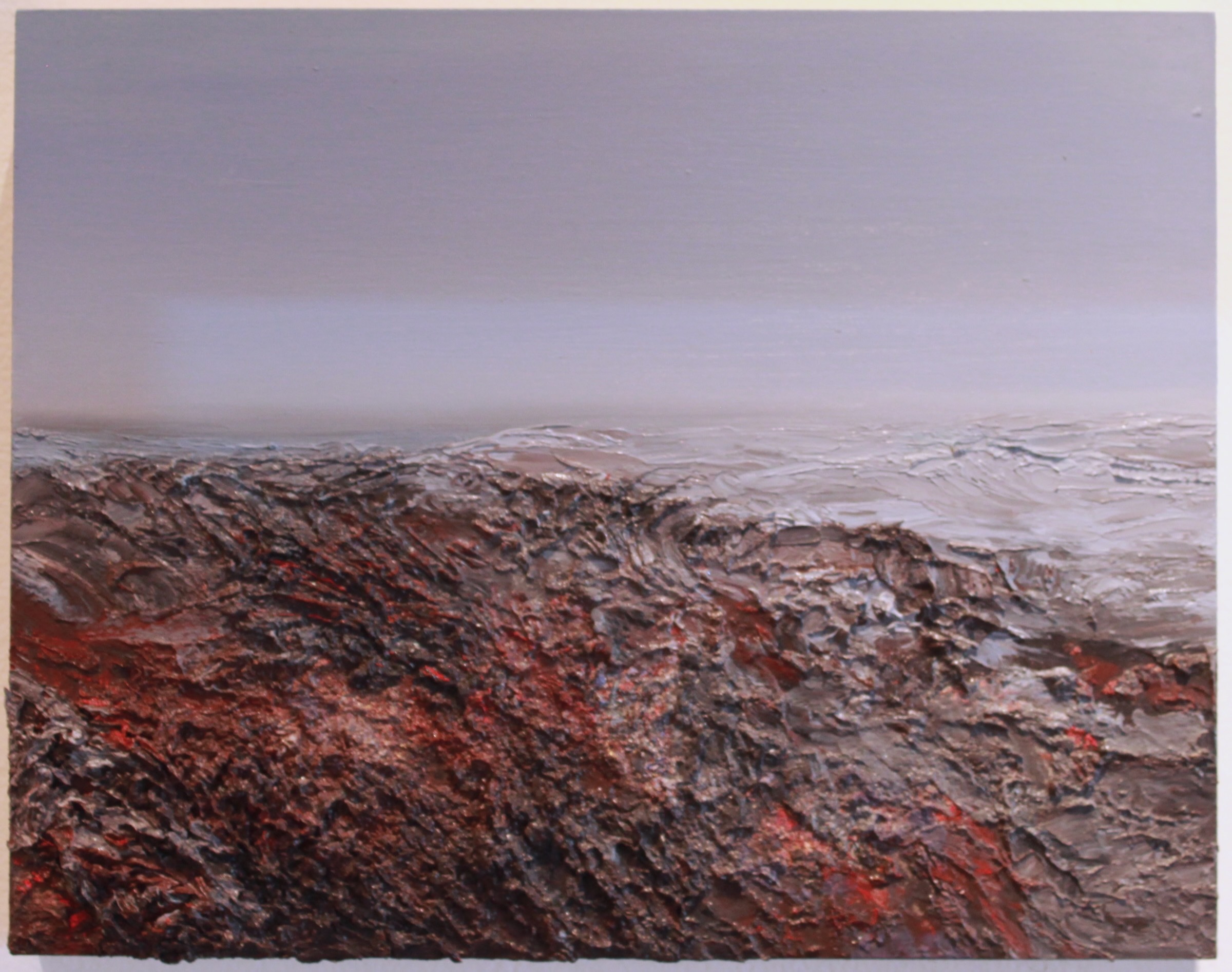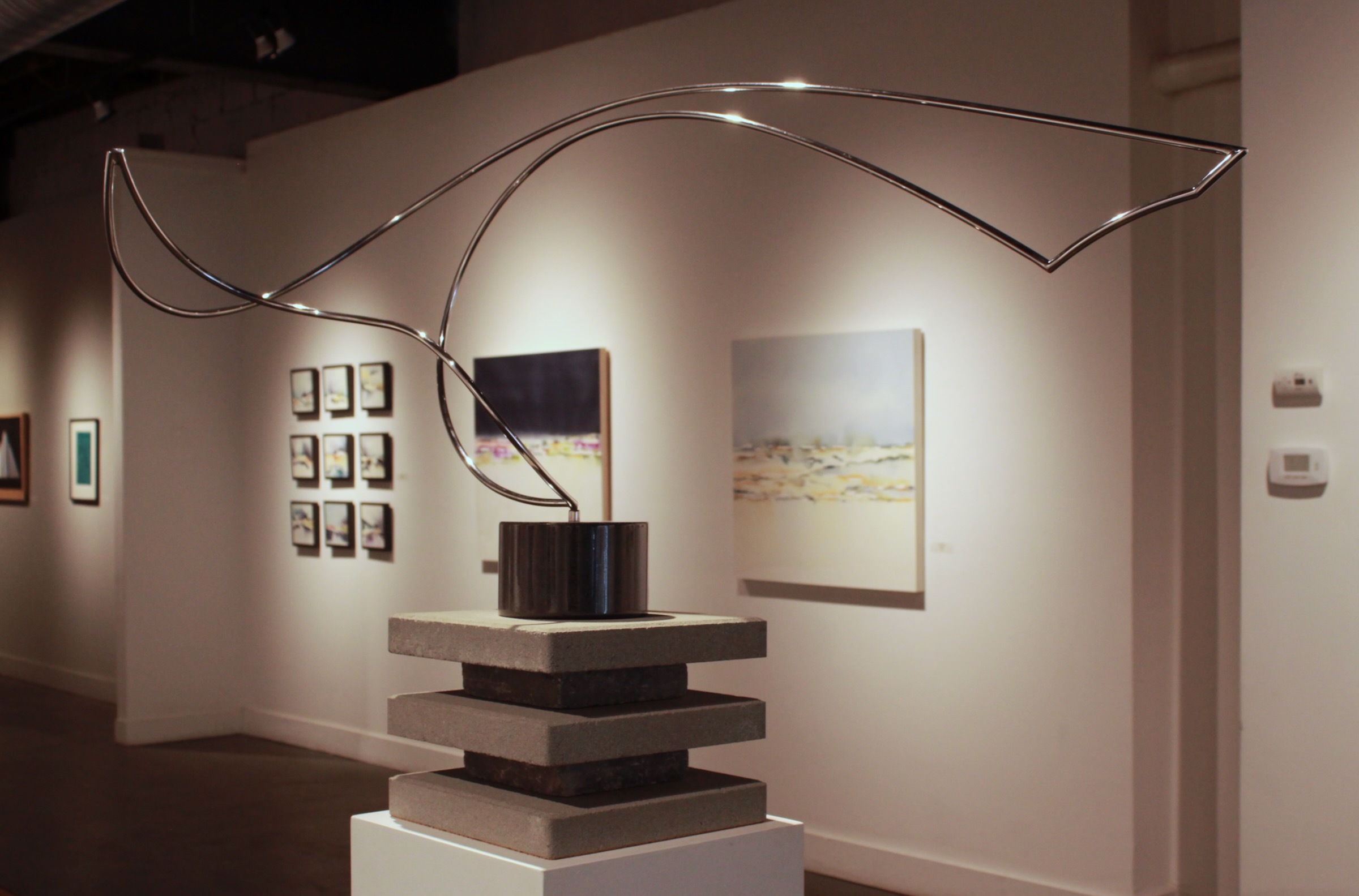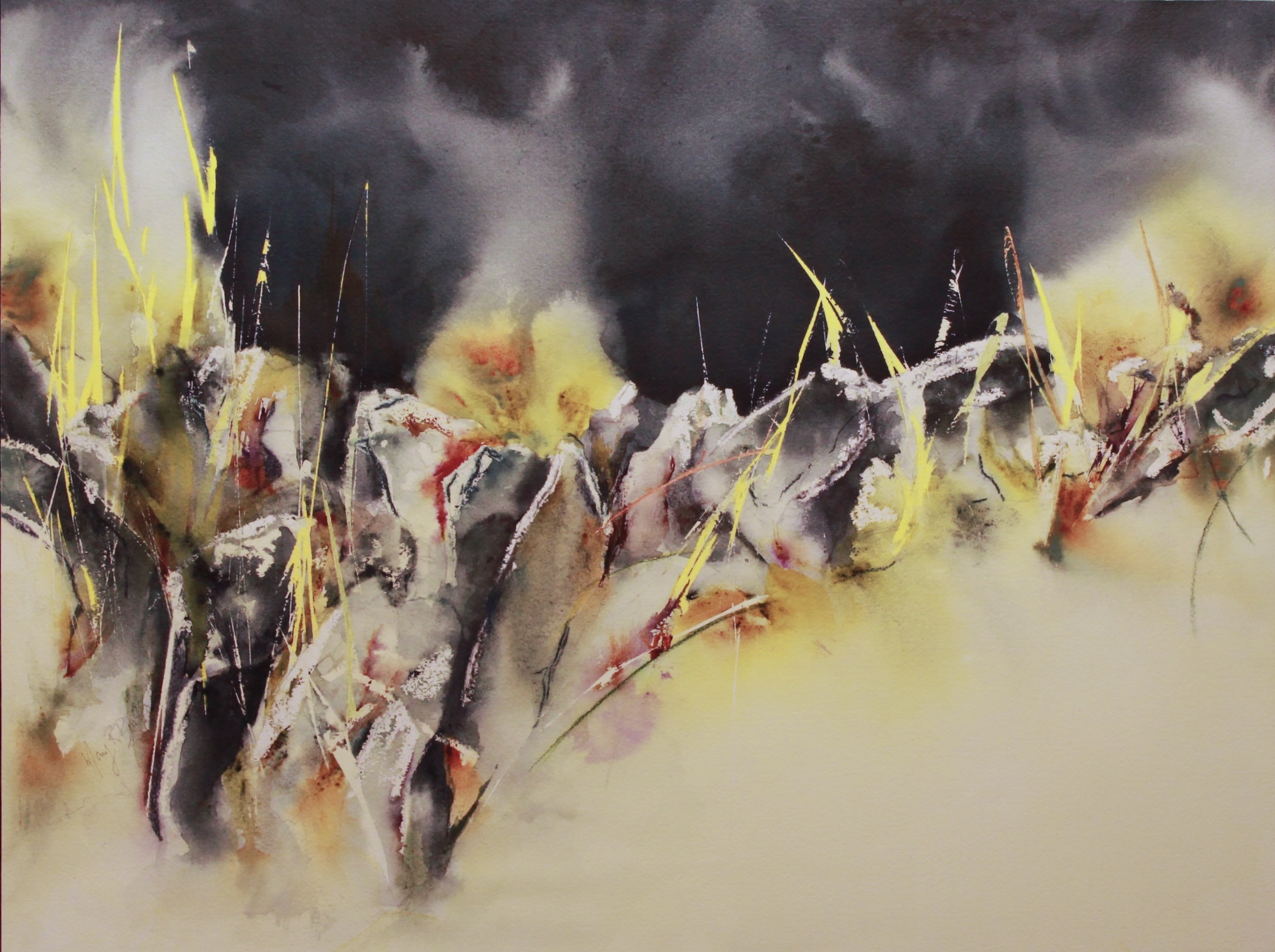The girl’s face is half-obscured by shadow, but in the directness of the stare from the one eye we can see, it can seem like we know her. Something strong is being communicated. But what is it exactly? It could be strength, or vulnerability; standoffishness or curiosity. The face seems to change with each reading we put on it, an effect heightened by the photographer, Sean Kernan, obviously creating it from two separate images. We are literally seeing her duality, and in that, her complexity, a complexity we perhaps all can convey if the photographer can capture it. In that complexity, it turns out, is communication across cultures.
Kernan’s work is part of “2025 New Members Exhibition,” a four-artist show running now through Oct. 5 at Kehler Liddell Gallery in Westville. As the title implies, the show welcomes four new artists into the Kehler Liddell fold — Kernan, Dganit Zauberman, Craig Frederick, and Mary Burke — and in doing so, showcases four strong visions for art and art making that connect with clarity and nuance.
“This series, Pura Cara Mexicana (pure Mexican face), is the outcome of hours of observing strangers’ faces in Mexico,” Kernan writes in an accompanying note. The project “sprang from an encounter with the powerful and psychologically penetrating portraits of Hermenegildo Bustos in the Ahóndiga Museum in Guanajuato. During his life Bustos had painted portraits of the inhabitants in and around his small town of Purisima del Rincon. Kernan set out to follow in his footsteps where the great-grandchildren of his subjects still live.
During the course of three trips to Mexico, Kernan set up his old-fashioned view camera. Through his assistant, Norma Suarez, they spoke to anyone who looked interested in the little makeshift studio and offered to do their portrait. Of the hundred or so people they spoke to, perhaps three said no. Kernan used a special Polaroid film, now discontinued, that made a negative from which to print. The completed work became an exhibit that traveled to several museums and galleries in Guanajuato State.”

The directness of the girl’s stare in Kernan’s photo is mirrored in Zauberman’s visceral pieces, which blur the line between painting and sculpture in their aggressive use of three-dimensional textures. “I paint what I feel,” Zauberman writes. “My process of painting is both the reflection and reaction to the world around me; My paintings are in constant dialog with the time. As the effects of climate change become more pronounced, the earth’s cycles and habitats are changing in many (unexpected) ways. I’m exploring the visual conversation about both earth and human ecosystems with reactions to the challenges, warnings to our shared future. I focus not only on ‘being’ — the form, and texture, along with the process by which it forms, moves and erodes — but also as a source of emotional and psychological mood.”
Zauberman’s pieces waste no time in getting their point across. A painting entitled Scorched Earth looks less like a painting of scorched earth than an actual sample of it, which is also true of an unsettling, affecting piece called Taking Shape of Skin and Tendons. Those are technical achievements, and they give the pieces power. Her piece Are We Going to Survive the Flood This Time surges with energy, in awe of the tide’s violence.

Meanwhile, sculptor Craig Frederick has something in common with fellow Kehler Liddell artist Gar Waterman in his ability to make hard, heavy materials seem soft — in Frederick’s case, even weightless. “The work I do is my way of attempting to understand an increasingly complex world, the human experiment, and my own existence by documenting my time here in the creation of sculpture,” Frederick writes. “The substance of my meditation is the experience of life: spiritual, emotional, intellectual, and physical. Each piece evolves as alchemy of personal interests, observations, and passions. Sculpture is how I can combine what is real with that which is imagined. In a world where order, as we perceive it, is a mere illusion, the work of my art becomes the ability to navigate the churning of many tides. Ultimately, I emerge with a better sense of self, manifested in sculpture.” In She Soars II, the piece looks remarkably different when viewed from different angles, as if it’s changing its shape, making manifest the intentions in its title.

Likewise, Mary Burke has an uncanny gift for making paintings that seem both representational and abstract at the same time. “My artistic process is as fluid as the materials I use,” Burke writes. “I am not trying to capture the physical image precisely but try to express the mystical experience … or the mesmerizing quality of the sea.” In many canvases, she manages to achieve both, conveying intricate details of oceans and landscapes with simple, unerring brushstrokes. Her most abstract canvases, like the one above, bristle with kinetic energy. But look more closely, and there’s serenity there too.
“2025 New Members Exhibition” runs at Kehler Liddell Gallery, 873 Whalley Ave., through Oct. 5. Visit the gallery’s website for hours and more information.






